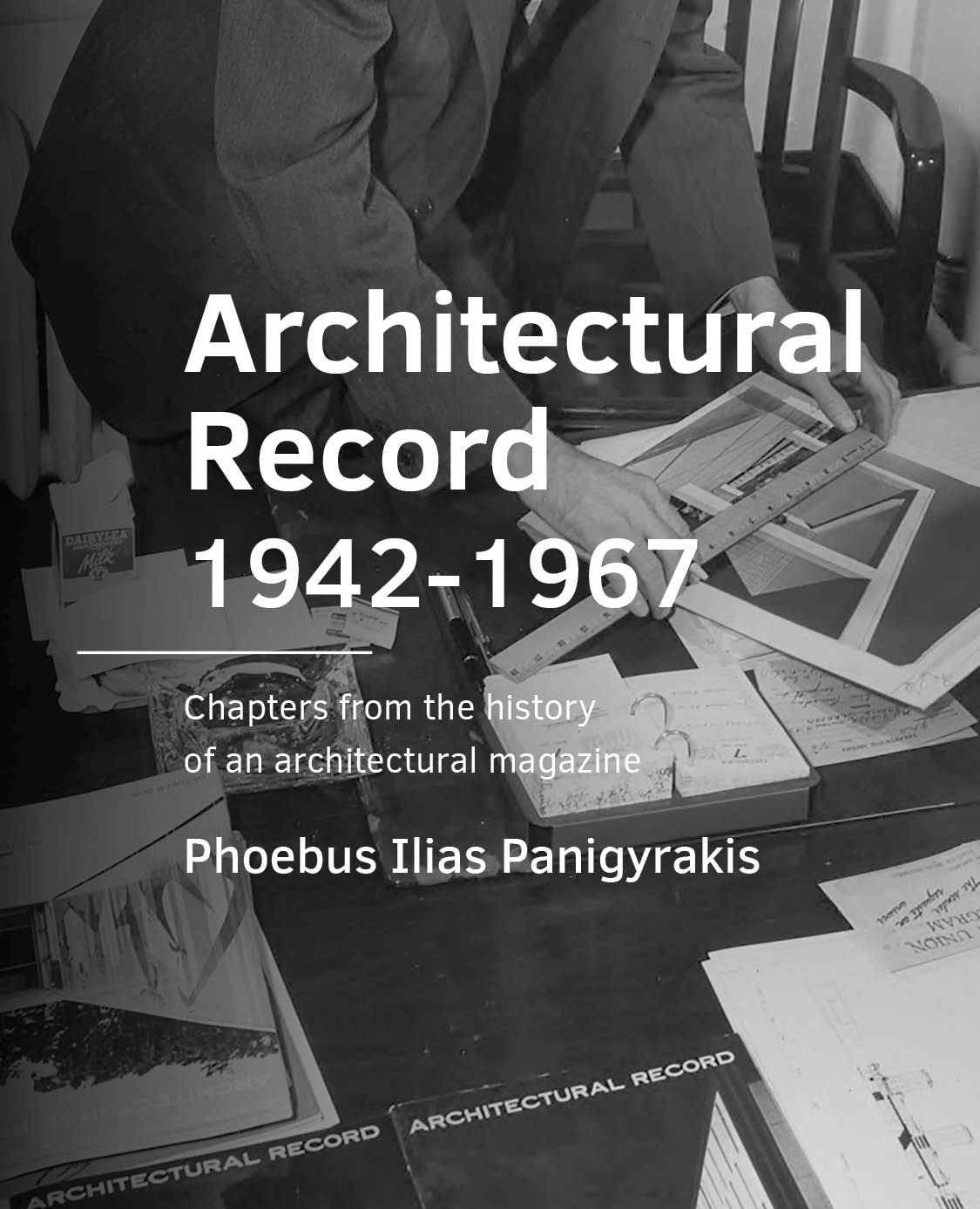The breakthrough of modernism in the US and its commercialisation was largely thanks to Architectural Record. PhD researcher Phoebus Panigyrakis concludes that this leading journal acted as a “vehicle for change”. The underlying motive was rather mundane: it was about advertising sales and not about ideals.
What image should an architect project? Before the Second World War, this was not a question on which a self-respecting journal would expend any pages. However, Emerson Goble, chief editor of Record from 1958 to 1967, thought it quite crucial. In a series of articles under the heading 'The Image of the Architect', he deliberately worked on a makeover of the architectural profession. He wanted the journal to adapt architects to the needs of the market. He did not expect any overbearing architectural critique from his editorial staff, but 'information that attracts advertising'. He even turned to marketing consulting firms. Goble believed that architecture must “have an appealing presentation, just like cookies or cars, otherwise it will never be possible to increase the market share.” It is a catchy example of the far-reaching commercialisation of the architectural profession in Phoebus Panigyrakis' PhD research Architectural Record 1942-1967 – Chapters from the history of an architectural magazine. “What I discovered was that advertising sales had a strong impact on editorial content.”
Criss-crossed
Architectural Record has been in existence since 1891, but Panigyrakis highlights the period from 1942 to 1967. The journal plays a crucial role in these years of transition from late modernism to postmodernism. His research focuses not only on the content of the journal, but especially on what is happening behind the scenes. In his travels, the Greek PhD researcher criss-crossed the United States delving for information in university libraries and company archives, and sifted through thousands of correspondence items between editors, publishers and architects. In 1942, modernism gripped firm ground in the US for the first time. America got involved in the war and had to be economical with money and materials. A consequence was that the production of American architecture, particularly public contracts such as airports, barracks and hospitals, became predominantly functional from one day to the next. In the period directly after the war, large housing and infrastructure schemes were also organised in a functionalistic-modernist way. It was only in the 1950s that single-family homes were once again the main part of architectural work, and it was more about taste and comfort than about functionality and affordability. The fairly conservative Record sensed the changes perfectly. The journal, which did not earn its revenue with subscriptions but with ads, promoted acceptance of modernism and functionalism in the 1940s. “But that was modernisation for profit; the idealistic component from Europe was missing,” says Panigyrakis. When housing became core business again, Record swapped the word 'modern' with 'contemporary'. Architects were expected to design for 'living pleasure' and 'conviviality'. How would this be achieved? With kitchen appliances, for example, for which sales representatives at Record sold ads.
Freud
There was no 'sponsored content', yet the ads in the journal and the editorial content were closely linked. How was that possible? In a 1960 marketing report, Panigyrakis discovered that a marketeer who had been engaged literally interviewed readers (architects) on the couch and asked tons of questions. Ernest Dichter, 'the Freud of the supermarket era', subjected them to a kind of psychoanalysis. It was not only about personal affairs, but also about how architects see themselves and Record. “In the years that followed, his ideas were reflected in the journal,” Panigyrakis observed. “Criticism dies down, Record gives more and more PR training to architects to communicate with a wider audience.” Those wanting to appear in the journal, have to play the game.
The image that looms is that of architects who depend on architectural editors for their success, who in turn depend on advertisers and publishers.The portrait of F.W. Dodge in the May 1958 edition of Record, gives an idea of how Record construes impressions. The boss of the family housing concern of the same name – and of the journal's publishing house – is sitting behind his desk in a three-piece suit in an ambient setting. Caption: 'The best boss a man can have'. A typical image-building case, says Panigyrakis. “The Dodge Man is the Marlboro Man! A hero figure is created to sell a product.”The journal used the same tactics of image building for dozens of architects. It is a method that has an impact to the present day, he observes. “It is all about a beautiful picture and no longer about the best architecture. That development started at Record.”
